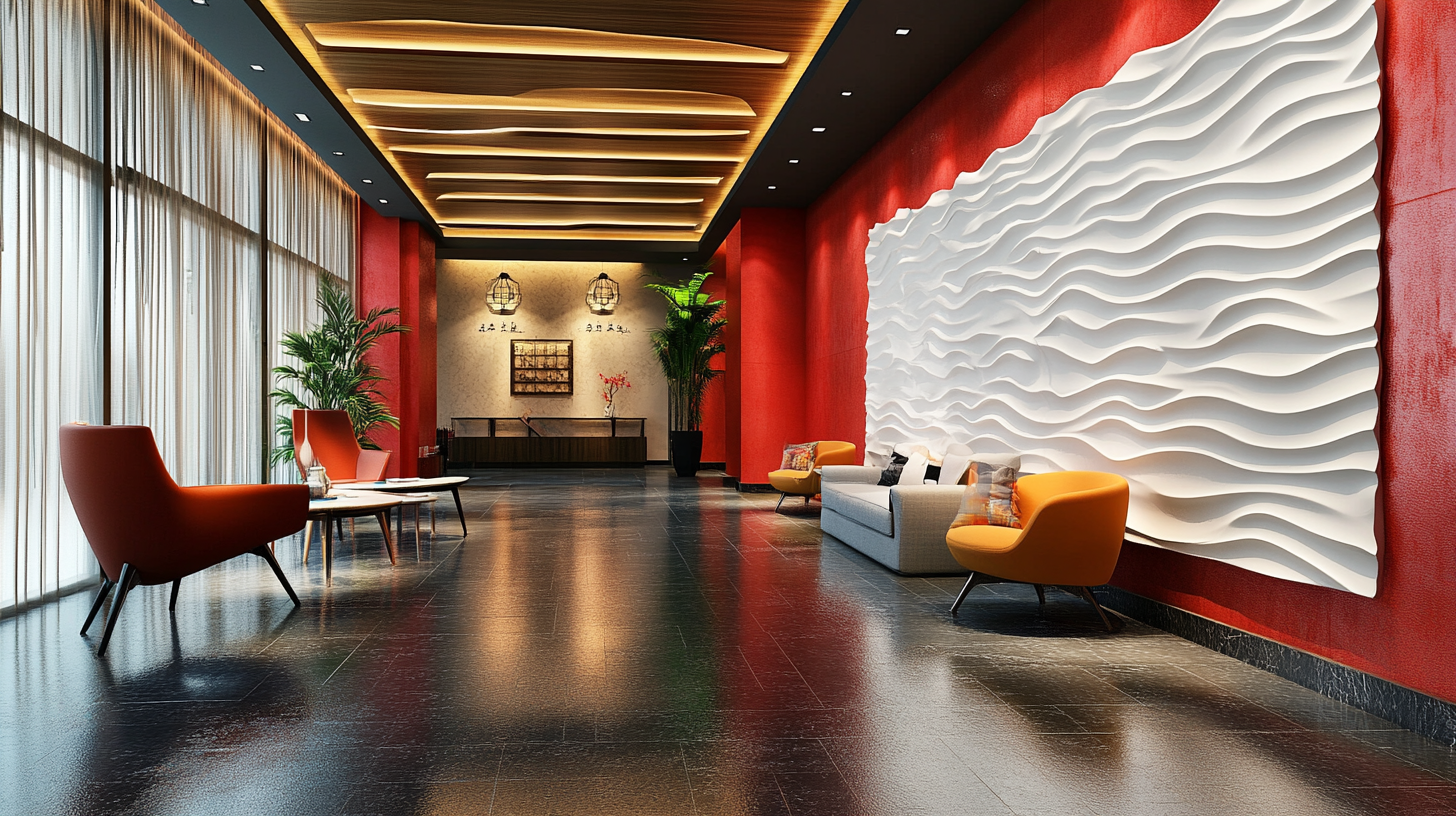Shandong Xiangying New Materials Technology Co., Ltd.
Shandong Xiangying New Materials Technology Co., Ltd.
In recent years, the intricate dynamics of global trade have been significantly influenced by the rising tensions between the United States and China, particularly through the implementation of reciprocal tariffs. Despite these obstacles, China's manufacturing sector has demonstrated remarkable resilience and adaptability, continuing to grow amidst such challenges. One noteworthy area of this growth is in the production of innovative building materials, including the increasingly popular 3D wall panels. These panels not only enhance aesthetic appeal but also offer functional benefits such as insulation and durability, making them a sought-after solution in modern construction. As China navigates the complexities of trade restrictions, the success of products like 3D wall panels highlights the ingenuity and determination of its manufacturing industry, paving the way for future advancements and sustainability in building solutions.

China's manufacturing sector continues to demonstrate resilience despite facing challenges from US tariffs. A recent overview of China's economic landscape shows that while industrial output is slowing, retail sales have increased by 4.8% a year, indicating robust domestic demand. Exports have also surged, aligning with the nation's focus on high-tech investments. By the end of 2024, China's GDP grew by 5%, driven largely by these dynamic factors. This growth reflects the ongoing transformation in China's factory sector as it pivots towards more innovative and sustainable practices.
**Tip:** For manufacturers looking to capitalize on China's growth trajectory, emphasizing adaptive technology and sustainability in production processes can position them favorably in an evolving market.
Moreover, insights from industry trackers highlight that China's policy-driven initiatives are expected to reshape the manufacturing landscape in 2025. These initiatives aim to boost domestic demand and foster innovation, which will be crucial for maintaining growth amidst external pressures. As the slow growth in industrial output persists, manufacturers must focus on efficiency and resilience through shifts in their business strategies and operations.
**Tip:** Monitoring government policies and market trends will be critical for businesses aiming to navigate challenges and seize new opportunities in the competitive landscape of Chinese manufacturing.
| Year | GDP Growth from Manufacturing (%) | Manufacturing PMI | Export Growth Rate (%) | Tariffs Impact Rating (1-10) |
|---|---|---|---|---|
| 2021 | 8.5 | 51.9 | 18.1 | 7 |
| 2022 | 4.1 | 50.7 | 12.5 | 8 |
| 2023 | 5.2 | 52.5 | 9.0 | 6 |
The ongoing trade tensions between the United States and China have imposed significant challenges on the manufacturing sector. According to a report by the International Trade Administration, the tariffs introduced as a result of the trade war have led to a 23% increase in the overall costs for manufacturers who rely on imported materials and components from China. These increased costs have prompted many companies to reassess their supply chains, often leading to a shift towards more localized sourcing strategies to mitigate tariff impacts.
In response to these challenges, businesses are exploring innovative solutions, such as advanced materials and technologies that can facilitate a more resilient manufacturing operation. For instance, the adoption of 3D wall panels has gained traction as a cost-effective and sustainable alternative that reduces dependence on overseas imports. A recent market analysis by Grand View Research indicates that the global market for decorative 3D wall panels is projected to reach $1.11 billion by 2025, growing as manufacturers seek to optimize production processes while adapting to new tariffs. This shift not only highlights the resilience of China's manufacturing sector but also underscores the importance of strategic adaptation in a rapidly changing economic environment.

China's manufacturing sector is experiencing a remarkable transformation, driven by the rapid development of innovative 3D wall panel solutions. These advancements not only enhance the quality of construction but also significantly contribute to energy efficiency. As modern manufacturing techniques converge with construction practices, the implementation of 3D wall panels becomes a key strategy for companies aiming to reduce costs and improve the speed of project completions. The unique designs and functionalities of these panels allow builders to meet ambitious sustainability targets while also responding effectively to the challenges posed by tariffs.
The competitive advantage gained through adopting these innovative solutions is crucial in an ever-evolving market. By leveraging state-of-the-art technology and incorporating advanced materials, manufacturers can create products that not only meet current demands but also anticipate future needs. This proactive approach plays a vital role in maintaining a leading position within the industry. As China continues to nurture its innovation capabilities, the potential for growth in the construction sector remains promising, paving the way for groundbreaking methods that redefine how structures are built and insulated.

In the face of increasing tariffs and trade tensions with the US, Chinese manufacturers have demonstrated remarkable resilience through adaptive strategies. Instead of succumbing to challenges, they have embraced innovation, re-evaluating their supply chains and exploring cost-effective materials. This adaptability has not only helped to maintain production levels but also to enhance the quality of products, particularly in sectors like building materials and home décor. By investing in advanced manufacturing techniques and automation, companies are reducing reliance on traditional methods and increasing efficiency.
One notable example of this resilience is the flourishing market for 3D wall panel solutions. As manufacturers adapt to changing consumer preferences and regulatory environments, the demand for customizable and aesthetically pleasing wall panels has soared. These products not only meet modern design trends but also cater to an eco-conscious audience, as many companies are now opting for sustainable materials in their production processes. This transformation reflects a broader trend within Chinese manufacturing, where the focus shifts from sheer volume to quality and sustainability, ensuring long-term growth despite external pressures.
This pie chart illustrates the distribution of different manufacturing sectors in China, highlighting the resilience and adaptability of Chinese manufacturers amidst tariff challenges. The largest segment represents the electronics sector, followed by textiles, automobile, machinery, and consumer goods.
China's manufacturing sector has shown remarkable resilience despite the ongoing tariff challenges with the U.S. This endurance is particularly critical as companies adapt to fluctuating trade policies and economic pressures. To secure their position, many manufacturers are shifting their strategies towards innovation and quality enhancement. Among these innovations, 3D wall panels have emerged as an ideal solution, providing both aesthetic appeal and practical benefits for various applications, from residential buildings to commercial spaces.
Looking ahead, sustaining growth in a tariff-impacted environment requires manufacturers to leverage advanced technology and streamline their operations. The focus on high-quality materials, coupled with sustainable practices, will be essential in capturing both domestic and international markets. Brands that incorporate adaptive strategies, such as adopting automation and reducing dependency on raw materials prone to tariff hikes, can maintain competitiveness. Ultimately, the ability to evolve in response to market challenges will determine the ongoing success of China's manufacturing industries, particularly in areas like innovative home decor solutions that cater to a diverse consumer base.
